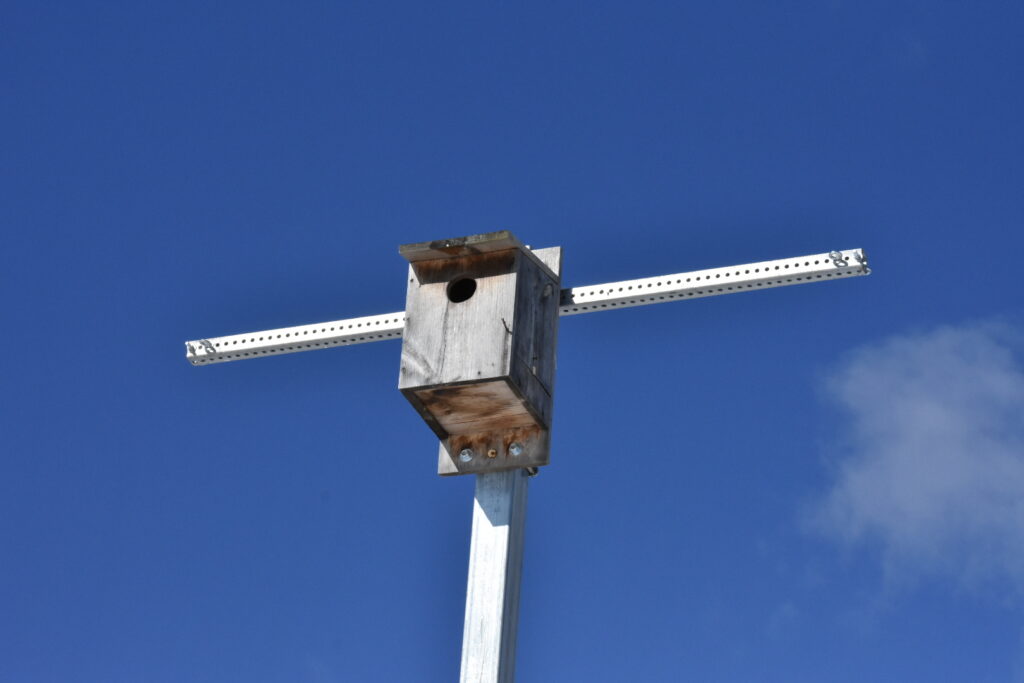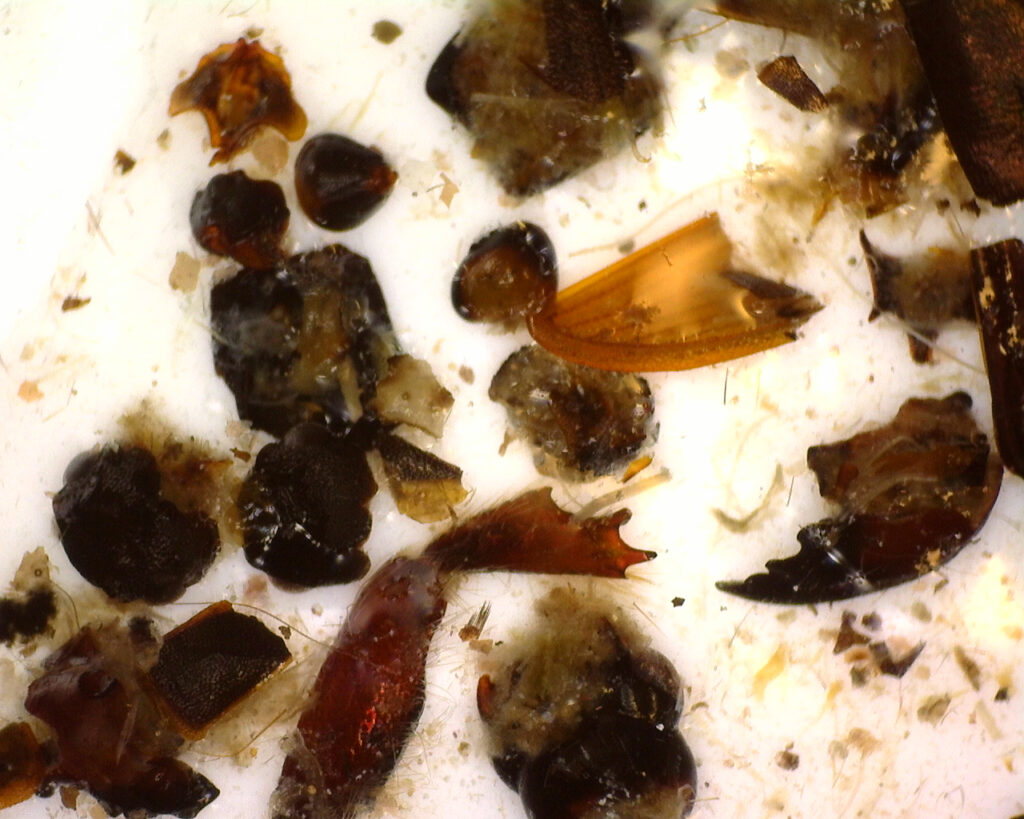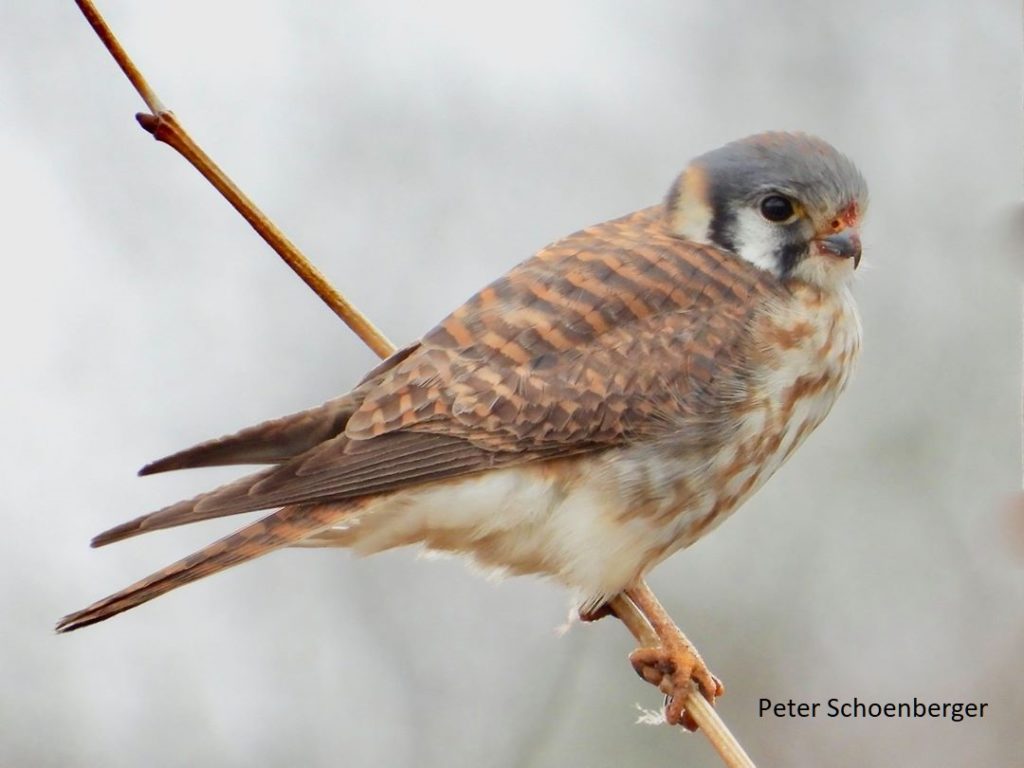Kestrels, Crops, and Conservation
The American Kestrel, North America’s smallest falcon, is frequently observed on farms in our area. Their diet consists mainly of insects, other invertebrates, small rodents, and birds. Some studies suggest they can provide a positive benefit to farmers to control crop pests. At the same time, farms can provide valuable habitat to kestrels, whose populations have declined in the region in recent years.
In 2019, the ecology team partnered with one of our farmer trainees on a kestrel habitat management project. We installed a nest box 20 feet high in the trainee’s hop yard as part of her crop project. The idea was to explore the feasibility and effectiveness of organic farmers creating kestrel nesting habitat in hopyards in our area. Most farmers growing hops already have tall posts in the ground and equipment to get up high to install and maintain boxes. Kestrels prefer nesting cavities that are high off the ground and far away from field edges, so naturally, the hop yard seemed like a suitable location. Last year, a pair made a nesting attempt in the box but were pushed out of the nest box by European Starlings by late April.
So far in 2020, the kestrels are still successfully defending the nest box. When walking in the hopyard, it’s common to find kestrel pellets underneath the hop polls where the kestrels perch. Birds cough up pellets that contain fur, bones, and other indigestible parts of their prey. Kestrel pellets were collected and examined for their contents last May. What we discovered, were mainly ground beetle parts. Ground beetles are sometimes considered beneficial in farming due to their consumption of both weed seeds as well as crop pests.
In studying birds as beneficials in farming systems, it’s important to understand that the line between pests and beneficials is not always easy to define. While farmers can provide important nesting habitat to kestrels, and kestrels can consume crop pests, we must also consider that the kestrel may consume beneficial insects too. As we work to better understand the interactions between ecology and agriculture, we can better predict how farm management decisions that support biodiversity might influence crop production.
A special thank you to Peter Schoenberger for his photo contribution.




